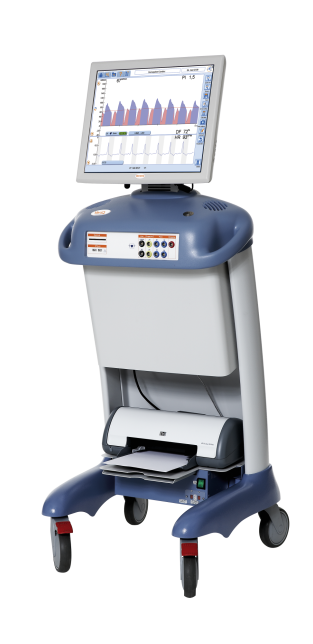Medistim VeriQ™
VeriQ™ offers both proven transit time flow measurement (TTFM) and Doppler velocity measurements that are specifically designed for intraoperative blood flow and graft patency verification
Transit Time Flow Measurement (TTFM) should be used to verify graft patency, as recommended by guidelines issued jointly in 2014 by the European Society of Cardiology (ESC) and the European Association of Cardio-Thoracic Surgery (EACTS).
The Medistim VeriQ system is designed to meet the growing demand for intra-operative quality control and documentation of surgical procedures.

Well-established ultrasound principles such as Transit Time Volume flow and Doppler velocity measurements have been adapted to meet specific needs in the operating room. Probes utilizing transit time and Doppler have been combined to optimise graft placement and assessment. A start-up time of less than 45 seconds and a reduced need for user interaction means that use of VeriQ™ adds only minimal time to the surgical procedure. A large 19″ LCD touch screen with an intuitive user interface displays all significant parameters and is easily readable, even from a distance. The new hardware platform allows for four flow, two pressure and two auxiliary channels in addition to the new Doppler channel. Every measurement is saved in a dedicated, high capacity patient database, keeping record of all measurements and data entered for each patient.
Hardcopy reports for the patient notes can be produced easily within seconds by the on-board colour printer, or exported to an external memory device in HTML format for easy distribution to the hospitals computing network.
Why verify graft patency?
Graft patency verification is crucial in CABG and OPCAB to evaluate the function of the performed bypass grafts.
Graft patency verification validates the quality of the surgery to the cardiologist, potential lawyers, and quality assurance committee.
Early detection of graft failure is cost-effective and may prevent hemodynamic instability, postoperative infarction (which may be caused by graft failure), and reduce number of days at ICU and in the hospital.
Cost effectiveness of intraoperative methods are important, and selection of methods for future treatment will be based on the number of reoperations preformed. Graft patency verification may help reduce the number of reoperations.
